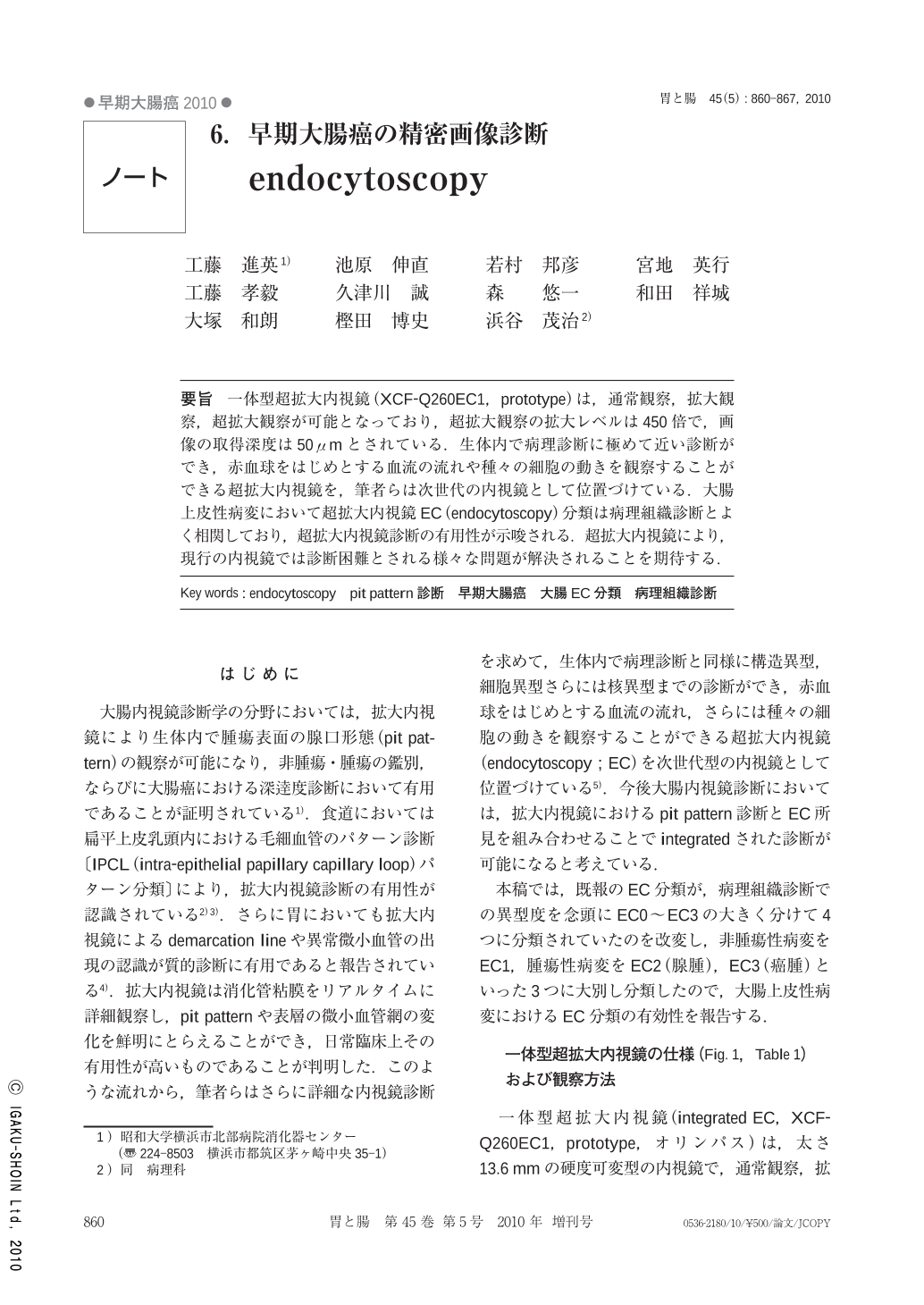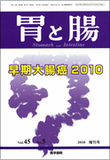Japanese
English
- 有料閲覧
- Abstract 文献概要
- 1ページ目 Look Inside
- 参考文献 Reference
- サイト内被引用 Cited by
要旨 一体型超拡大内視鏡(XCF-Q260EC1,prototype)は,通常観察,拡大観察,超拡大観察が可能となっており,超拡大観察の拡大レベルは450倍で,画像の取得深度は50μmとされている.生体内で病理診断に極めて近い診断ができ,赤血球をはじめとする血流の流れや種々の細胞の動きを観察することができる超拡大内視鏡を,筆者らは次世代の内視鏡として位置づけている.大腸上皮性病変において超拡大内視鏡EC(endocytoscopy)分類は病理組織診断とよく相関しており,超拡大内視鏡診断の有用性が示唆される.超拡大内視鏡により,現行の内視鏡では診断困難とされる様々な問題が解決されることを期待する.
We have reported endocytoscopy(EC), an ultra-high magnification system, which enables us to observe not only the structural atypia but also the cellular atypia in colorectal lesions. In this study, we used the integrated type EC(XCF-260EC1, Olympus, Tokyo, Japan). We classified the EC findings into 5 groups(EC classification)and evaluated the usefulness of the classification for differential diagnosis. Positive predictive value of each EC group was as follows. EC 1b(hyperplastic polyp): 100%. EC 2(adenoma): 75.0%. EC 3b(invasive cancer): 98.4%. In lesions of EC 3a, 9.1% were adenomas and 45.5% were invasive cancers. As for the differentiation between neoplastic(EC 2.3)and non-neoplastic(EC 1)lesions, the EC diagnosis corresponded with the pathological diagnosis completely. The integrated type EC system enabled us to observe colorectal lesions at the cellular level in vivo. Our classification of EC images corresponded well with the final pathological diagnosis. Endosytoscopy was especially useful for differential diagnosis between neoplastic and non-neoplastic lesions and for diagnosing invasive cancers.

Copyright © 2010, Igaku-Shoin Ltd. All rights reserved.


